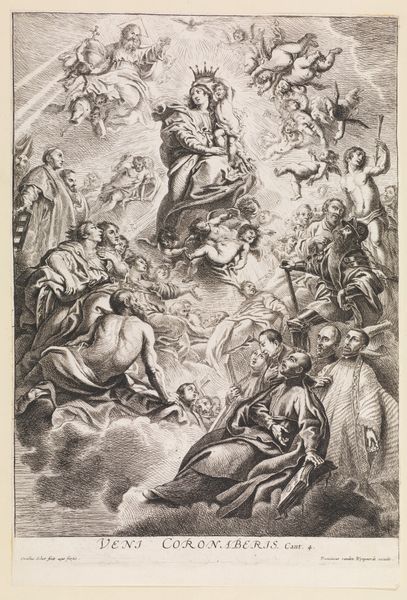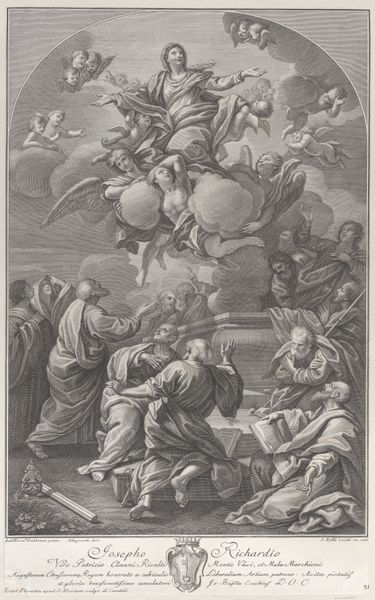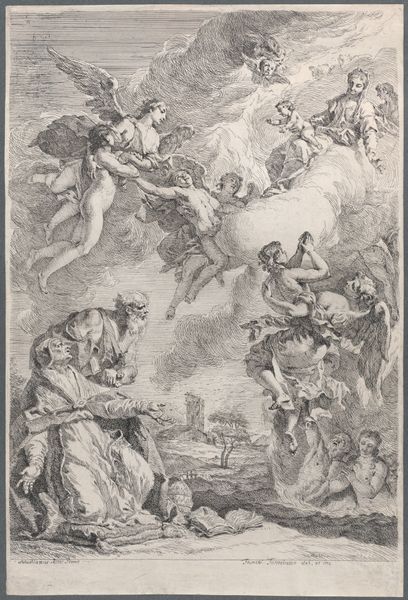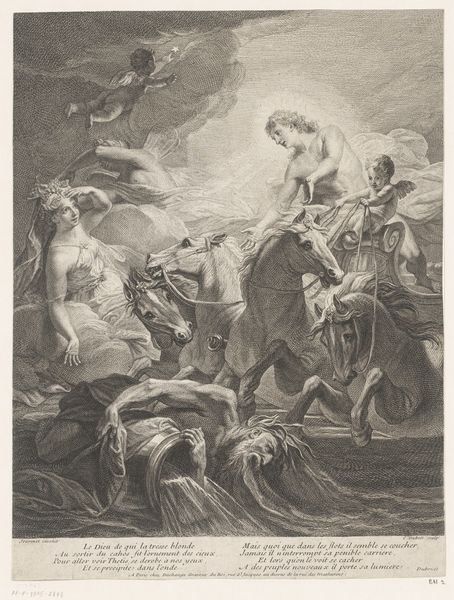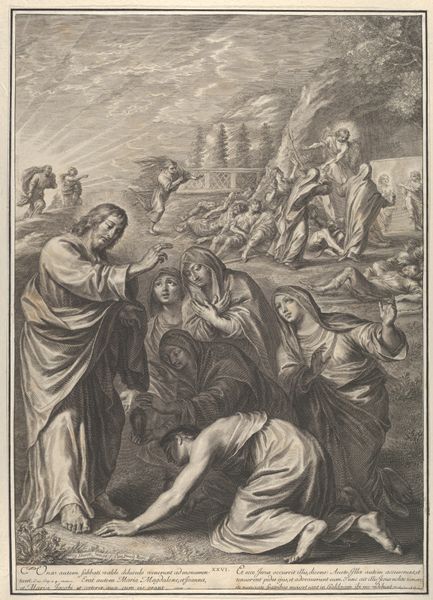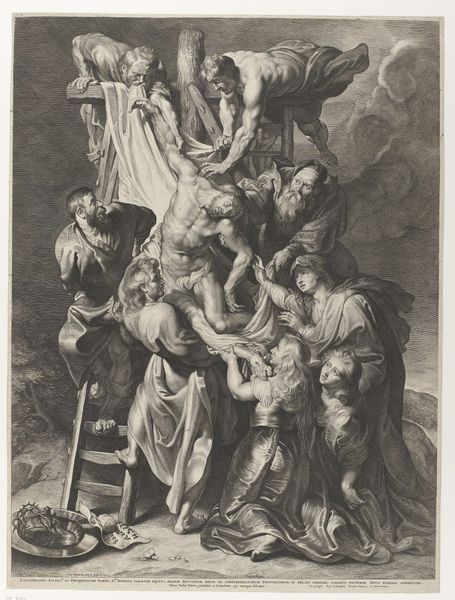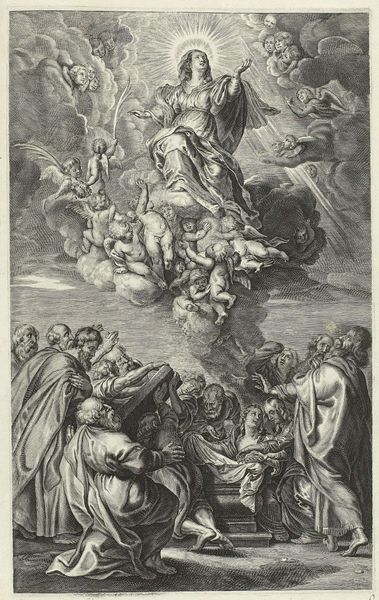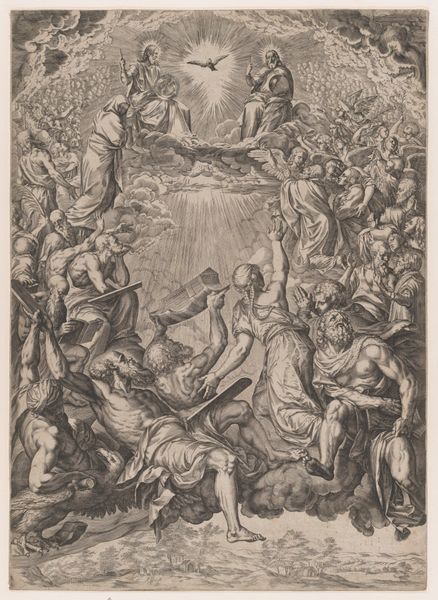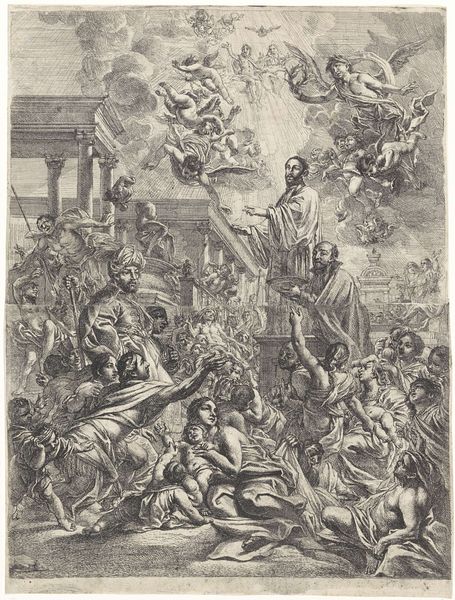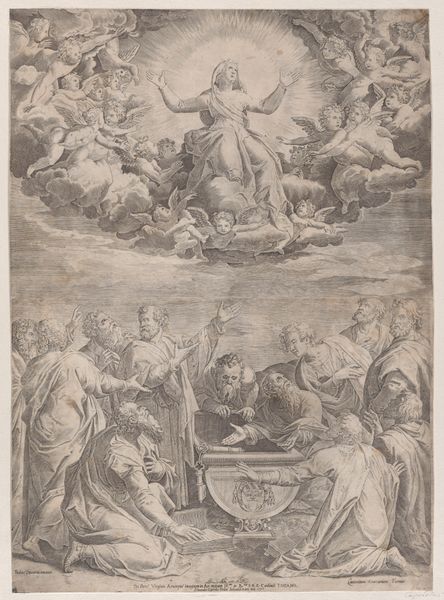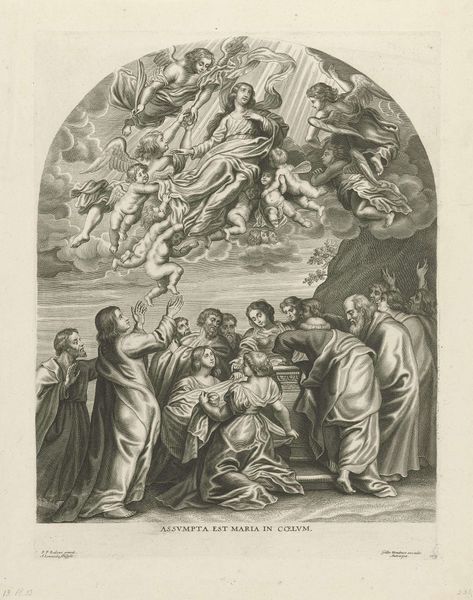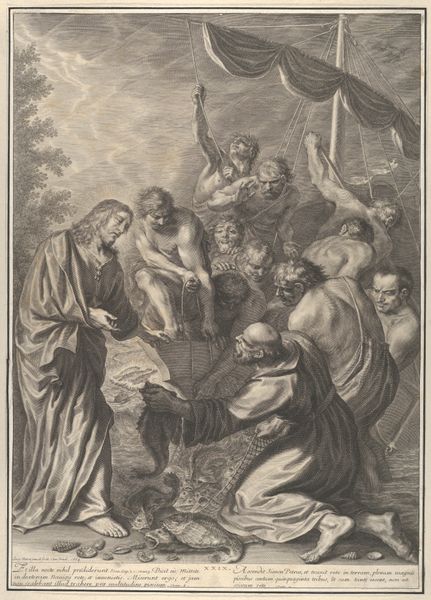
drawing, print, engraving
#
drawing
#
baroque
# print
#
figuration
#
history-painting
#
engraving
#
virgin-mary
Dimensions: Sheet: 25 5/8 × 18 3/4 in. (65.1 × 47.6 cm)
Copyright: Public Domain
Curator: This engraving, created sometime between 1638 and 1670, presents François Ragot’s interpretation of "The Assumption of the Virgin.” Editor: The composition feels charged, with a tension between the darkness at the bottom and that radiant light bursting forth above. What first strikes you? Curator: I am immediately drawn to the verticality and upward movement that drives the entire scene. Consider how the figures at the base crane their necks, a collective gaze pulling us towards the Virgin Mary rising heavenward amidst the throng of angels. Ragot uses these visual cues to underscore the doctrines around the Assumption, particularly during the Counter-Reformation's affirmation of Marian veneration. Editor: Absolutely, and the visual symbolism here is layered. Mary's ascension is both physical and spiritual, emphasized by the radiant light, which, classically, represents divine grace. The surrounding cherubs aren’t mere decoration, they signify celestial glory, lifting Mary upwards while solidifying the theological symbolism central to the period. Curator: From a feminist perspective, however, we can unpack the implications of this iconic representation. The narrative of the Virgin's ascent into heaven without experiencing bodily death can be interpreted in many ways. Some could see it as the ultimate validation of female virtue; others may see it as setting unrealistic expectations for women rooted in chastity and piety. Editor: Indeed, by that time these iconographies are completely entrenched; it would have resonated profoundly within the cultural understanding of feminine roles, ideals, and, especially important in a Baroque piece like this one, expectations of religious life. We see visual reminders everywhere, such as Mary’s hand gestures and even the flow of her robes. Curator: Thinking about intersectionality, how might communities excluded or marginalized by the Church have received such imagery? It brings into question the relationship between religious art and socio-political power. Editor: This print makes one consider just how embedded religious motifs are within collective visual culture and even broader conversations. They often outlive their direct meaning. Curator: For me, it underscores the power of visual art in shaping perceptions, beliefs, and cultural memory. Editor: And how artistic decisions about symbolism often reflect the needs and values of an audience for generations to come.
Comments
No comments
Be the first to comment and join the conversation on the ultimate creative platform.
